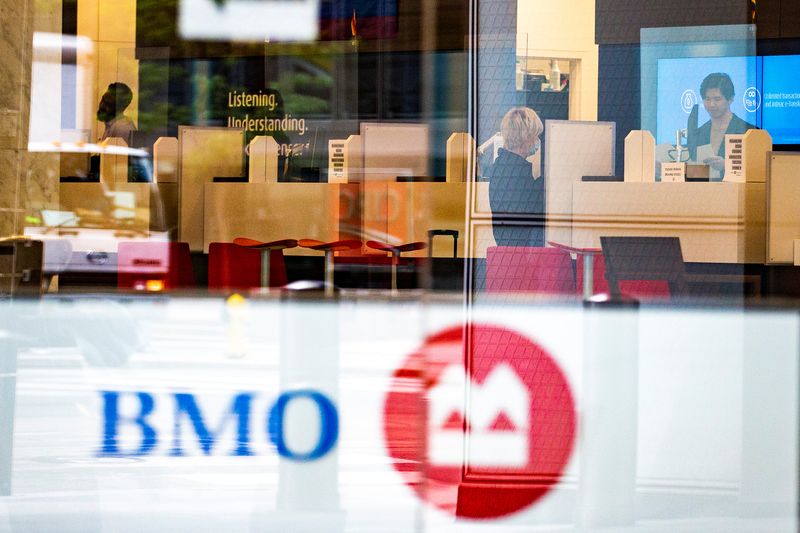TORONTO (Reuters) – Canada’s biggest banks started fiscal 2022 on a hiring spree, adding staff despite a tight labour market, especially to boost digital capabilities.
Their expansion in the midst of surging inflation could threaten profit margins, particularly as higher interest rates weigh on loan volumes.
“It’s a Catch-22,” said Avenue Investment Management portfolio manager Bryden Teich. From a short-term profitability perspective, “you don’t want them aggressively growing their costs at this part of the economic cycle.”
But not adding staff when clients are seeking more advice and personalized solutions and better digital offerings would hurt longer-term growth, he added.
The top five banks had increased their Canadian full-time equivalent positions to a record 171,730 in the first quarter of fiscal 2022, up 4.3% from a year ago for the fastest pace in at least three years, according to Reuters’ analysis of the banks’ statements.
The unemployment rate in the finance, insurance and real estate industries was at a record low 1% in March, the lowest of any industry in Canada.
Carolyn Hamer, partner at Deloitte focused on workforce-related issues, said the banks are trying to plug the digital gaps they recognized during the pandemic and are starting to get more aggressive as they compete with large technology firms.
Even in a tight labour market, banks can turn to contractors and gig workers, particularly with employees themselves seeking more flexibility, she said.
Bank of Montreal, whose Canadian workforce grew by 7.5%, the fastest of the major lenders, has been expanding its technology operations and personal and commercial banking, said Karen Collins, its chief talent officer.
Digital channels now account for more than a third of sales, and 90% of self-serve transactions happen outside branches, primarly online, so BMO wants to improve technology infrastructure and replace routine branch services with more advisory offerings, Collins said.
BMO is offering remote working flexibility, particularly to technology workers, if their roles allow, she added.
Royal Bank of Canada’s employee growth peaked in the third quarter of 2021 but it is still expanding its technology workforce, after adding 2,000 technology jobs last year, about half of those external hires, said Helena Gottschling, chief human resources officer.
“It is harder to source those critical skills, because we’re not the only employer hiring and… (we get) fewer applications than three years ago,” she said.
“In a tight talent market, compensation always rises to the top as an important lever,” she added. “We know who our top talent is” and reward them accordingly.
While this could boost labor costs more than expected, rising margins from higher interest rates could offset this, said Jason Boggs, Canadian banking and capital markets leader at PricewaterhouseCoopers.
Toronto-Dominion Bank announced plans to add 2,000 technology roles this year.
Anna Zec, senior vice president for human resources at Bank of Nova Scotia, said Scotiabank’s hiring surge reverses a pandemic reduction in recruitment.
Scotiabank, which had the second-biggest growth, plans to continue to expand Canadian banking and wealth management, and build its digital capabilities, she told Reuters.
“Customers are asking for more and more digital solutions… I don’t foresee our demand for technology talent slowing down anytime soon,” she said. “I think 2022 will continue to be a very challenging year from a talent standpoint.”
(The story is updated to correct title of BMO chief talent officer)
(Reporting By Nichola Saminather; Editing by David Gregorio)




















